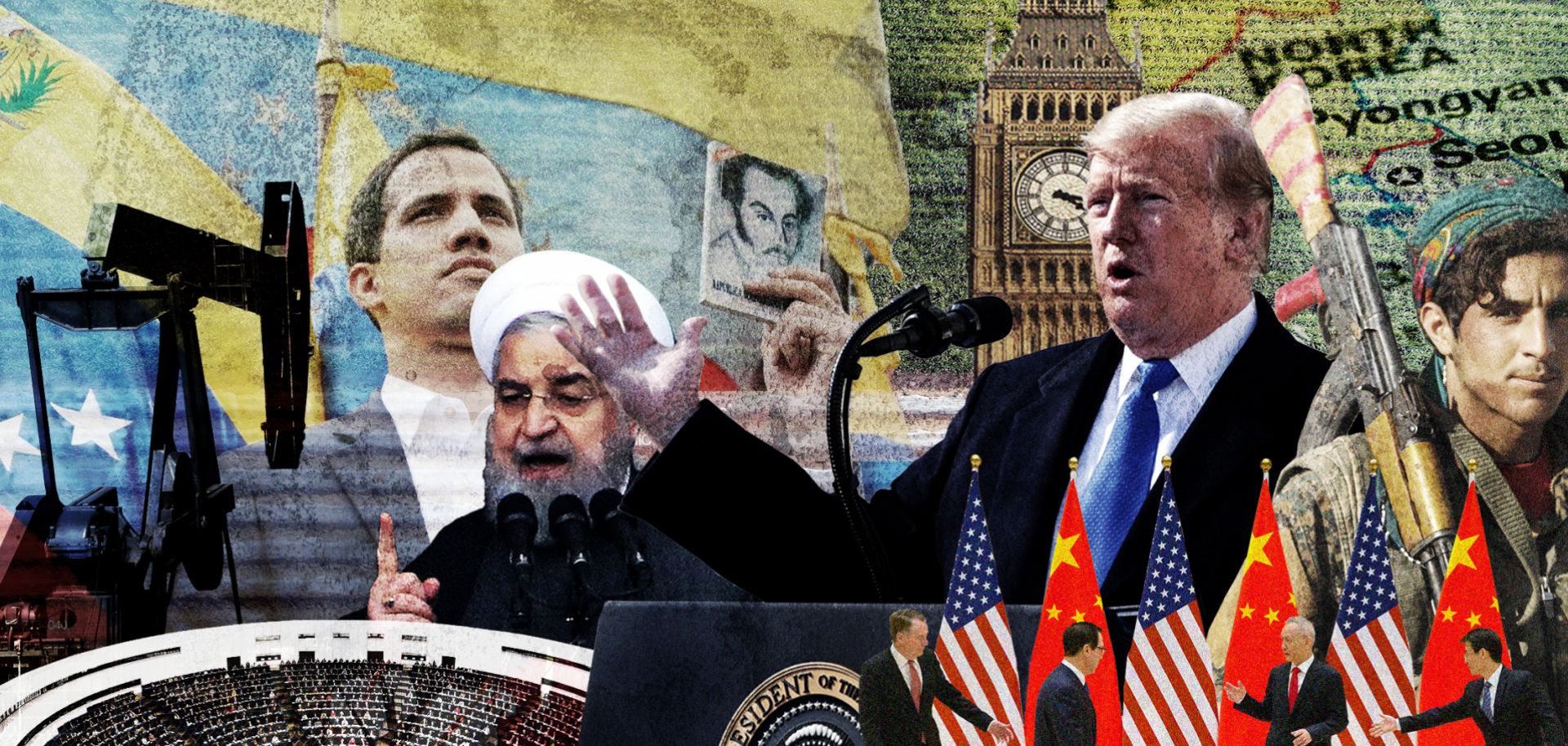QUARTERLY FORECASTS
2019 Second-Quarter Forecast
Mar 10, 2019 | 21:59 GMT

(MARK RALSTON/DELIL SOULEIMAN/ATTA KENARE/FREDERICK FLORIN/MARK SCHIEFELBEIN/ ALEX WONG/FEDERICO PARRA/PETER MACDIARMID/AFP/Get
Overview
Stratfor's 2019 Second-Quarter Forecast explores what the coming months ahead will bring, focused on international affairs and global risk through the prism of geopolitics. ...
Subscribe Now
SubscribeAlready have an account?
